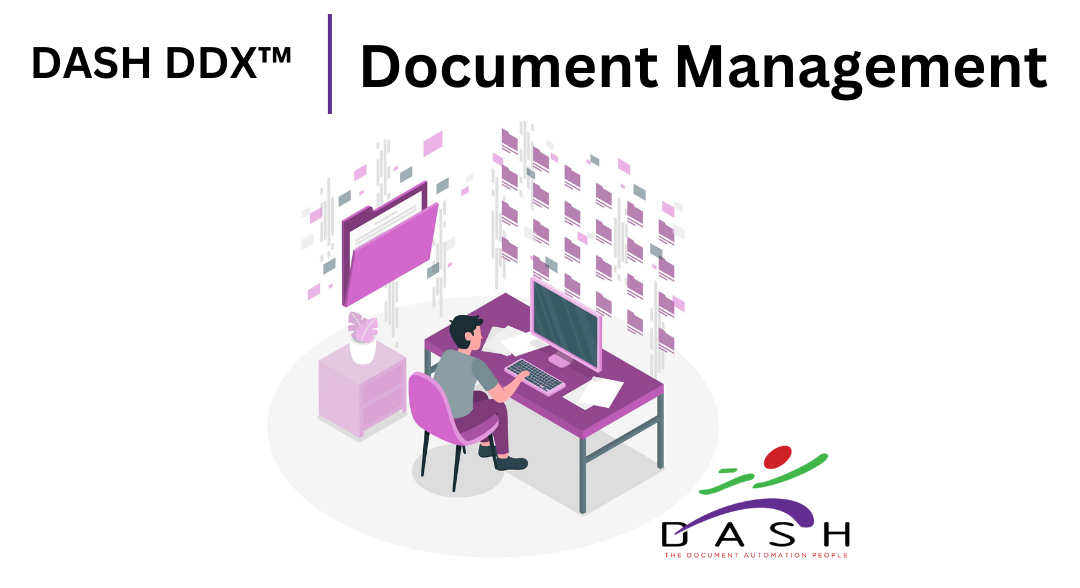5 Hang-Ups of Document Automation
5 Hang-Ups of Document Automation 🖐️
…and how DASH can help.
➡️➡️Discover how to navigate complexities, address resistance, and turn document automation into a game-changer for your business.
➡️➡️Whether you’re a seasoned professional or just diving into the world of automation, this article provides valuable insights for everyone.
In the dynamic landscape of modern business operations, the integration of document automation systems has become increasingly prevalent, promising enhanced efficiency and accuracy in document creation processes. However, as organizations embark on this transformative journey, they encounter a set of challenges that can act as significant hang-ups. From the initial hurdles of implementation to concerns surrounding data security and resistance from employees accustomed to traditional methods, the road to successful document automation is not without its complexities.
This article delves into the top five hang-ups associated with document automation, exploring the nuances of each challenge, and offering insights into mitigating strategies. Whether grappling with the intricacies of customization or navigating the delicate balance between cost considerations and long-term benefits, organizations must navigate these challenges to unlock the full potential of document automation in the modern business environment.
- Initial Implementation Challenges: One of the significant hang-ups in adopting document automation is the initial implementation phase. Organizations may face challenges in integrating the new system with existing business processes, databases, and other software. This process requires thorough – yet practical levels of planning, training, and sometimes even customizations to ensure a smooth transition, and overcoming these hurdles can be time-consuming. But better to do it right, than do it fast.
- Complexity and Customization: Document automation systems can be complex, especially when dealing with intricate document structures or diverse needs. Customizing the system to cater to specific business needs may require advanced technical expertise as well as pragmatic decision-making. Balancing the desire for customization with the need for user-friendly interfaces can be a challenge, as overly complex systems may lead to resistance from end-users, or could make things so difficult/complex that it jeopardizes the success of your implementation. Avoid customization and complexity to the extent that you can. Simplicity is your friend – especially early in the process.
📄Pro Tip: Avoid the temptation to choose your hardest problem to tackle first. Choose something that you can solve relatively easy. It lets you chalk up a success and get some experience before moving on to the really difficult terrain.
- Data Security Concerns: The automation of document creation often involves handling sensitive and confidential information. Organizations may be concerned about data security, especially determining who should be able to view or share documents. Ensuring robust security measures, encryption, and compliance with data protection regulations becomes crucial to address these concerns and build trust in the system.
- Resistance to Change: Employees accustomed to traditional document creation methods may resist the shift towards automation. Fear of change, job displacement, unfamiliarity with new tools, or a lack of confidence in the accuracy of automated processes can hinder successful adoption. Organizations need to invest in comprehensive training programs and change management strategies to overcome resistance and promote user acceptance. The adoption of document automation can yield significant benefits, but determining the right team to initiate this transition is crucial for a smooth and successful implementation. Typically, teams dealing with standardized and repetitive document creation processes should be the first to embrace document automation. Legal, HR, or finance teams, for instance, often generate documents with consistent structures, making them ideal candidates for automation. These teams stand to gain immediate efficiency and time savings by automating tasks such as data entry, formatting, and approvals. Additionally, the standardized nature of their documents allows for a more straightforward integration of automation tools. By starting with a team that deals with relatively uniform document workflows, organizations can pilot the technology, refine processes, and build confidence before expanding automation to more complex and varied document creation tasks across the entire organization.
📄Pro Tip: Choose the initial team carefully. Choose individuals strongly driven, and most likely to make the project succeed. Their success will make a great example for those that follow.
- Cost Considerations: While document automation systems can lead to long-term cost savings, the initial investment in acquiring and implementing the technology can be significant. Small and medium-sized businesses may find it challenging to justify the upfront costs. It’s crucial to carefully assess the return on investment and communicate the long-term benefits to stakeholders to gain support for the adoption of document automation.
The integration of document automation systems offers compelling advantages, yet organizations must navigate several challenges for a successful implementation. Despite the initial hurdles, the potential benefits, including increased efficiency, consistency, and compliance, make document automation a transformative solution. Addressing these hang-ups requires careful planning, focus, and comprehensive training programs. By overcoming these challenges, organizations can unlock the full potential of document automation, realizing long-term efficiency gains and improved document management processes. We’ve been helping businesses for over 20 years [before it was even cool!] manage their documents. We find our passion and motivation in witnessing businesses thrive and compete on a broader scale, thanks to the implementation of automation. You can too.
You can create a paperless office.
Small businesses. Medium businesses. Anywhere in the world. We’re here to help.
Document automation offers EFFICIENCY, PROTECTION, AND SHARING opportunities for your business.
Contact us to learn more and see a demonstration. We’d be happy to dig in and see if we’d be a good fit.
To learn more about how to implement and get started on your document automation journey, contact our team of experts today.
About the Author:
Stephanie is the marketing guru at DASH. For over 20 years, DASH has been authoring, delivering, and supporting DASH DDX™ and DASH AP Robot™, its ERP-integrated software to small and mid-sized manufacturing and distribution companies throughout the USA and beyond.
Let’s chat!
Follow the Dash Blog
Sign up to follow blog posts from Dash



